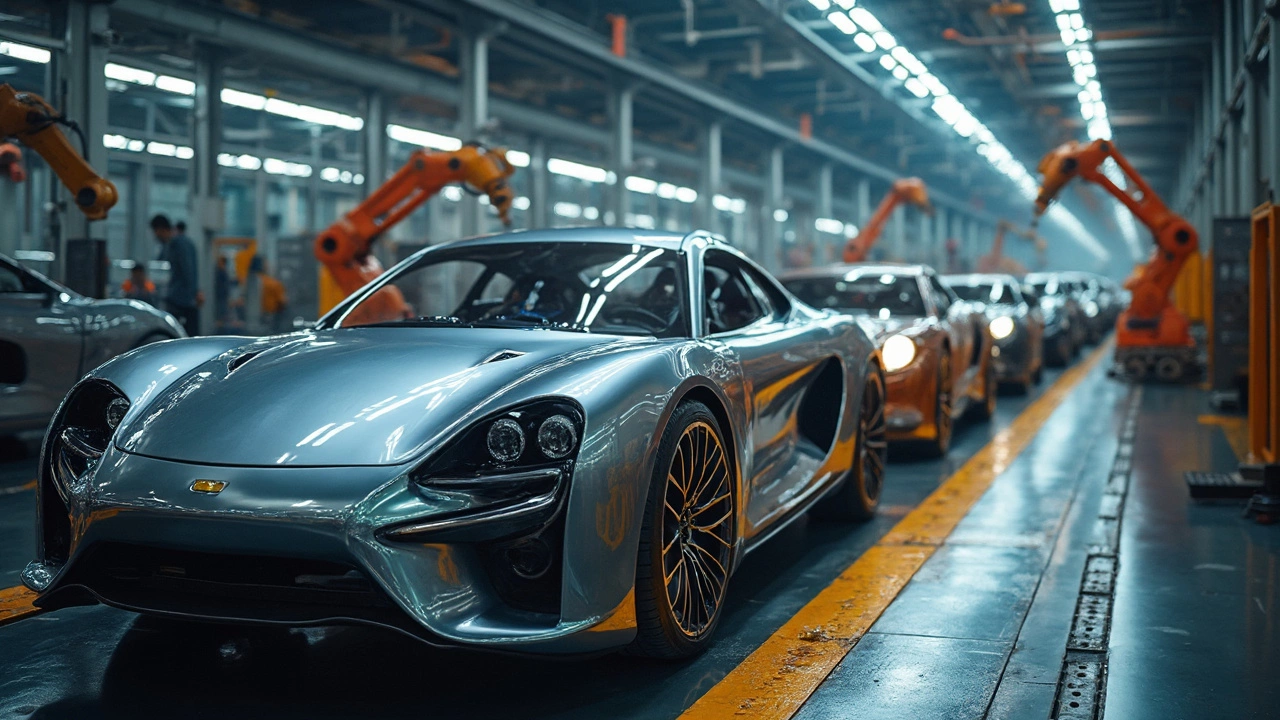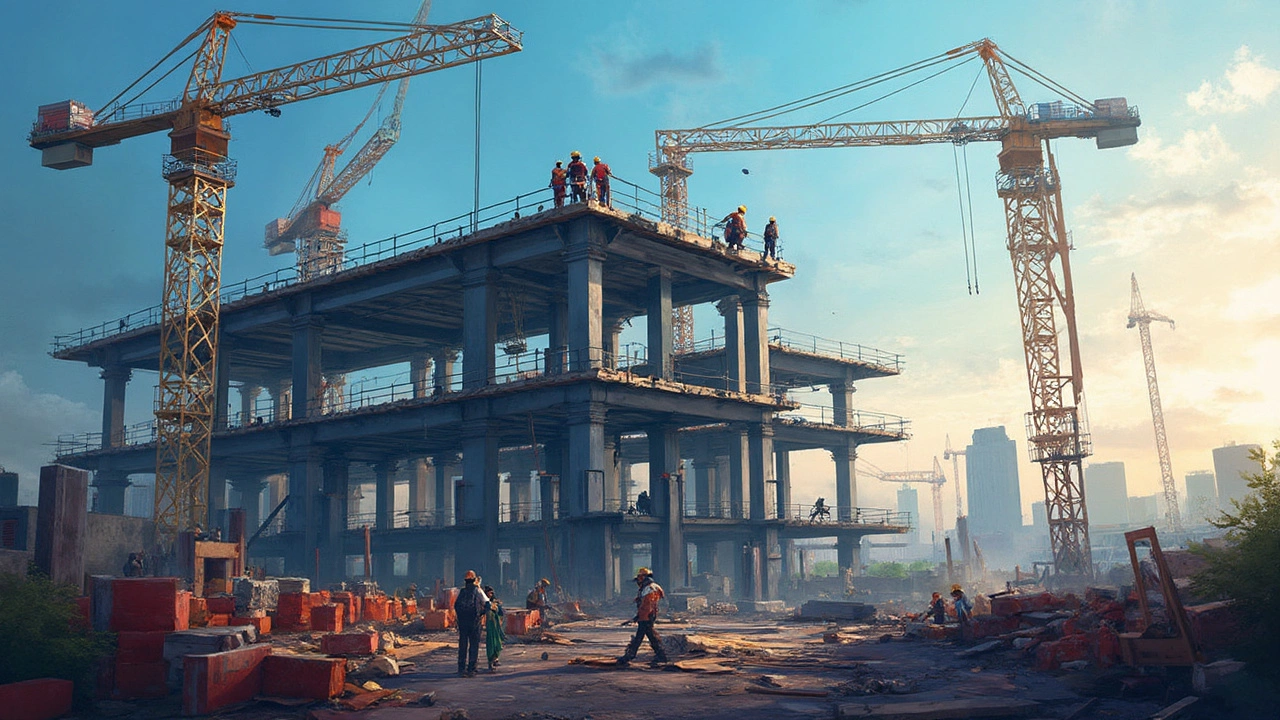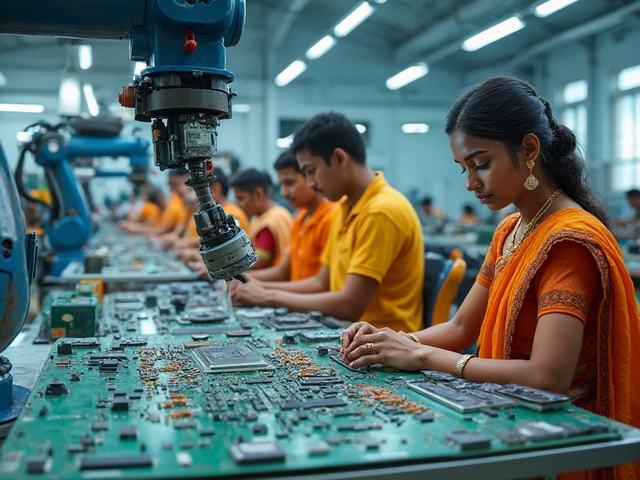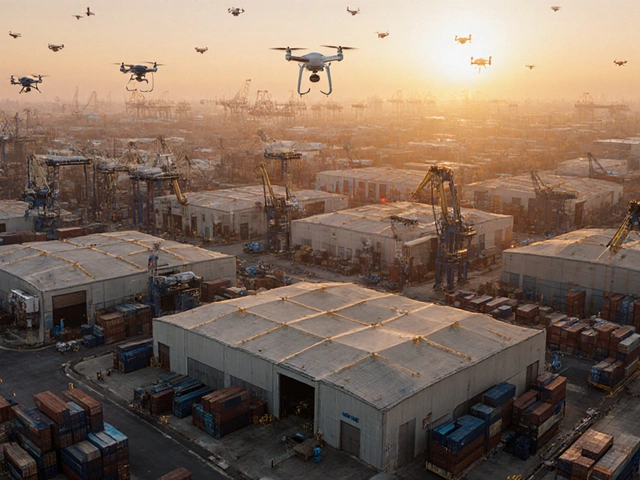Ever thought about how much steel goes into the world around us? It's everywhere, from the buildings you walk past every day to the car you drive. But have you ever wondered who's really buying up all this steel? Turns out, there are some key players that keep this industry alive and kicking.
The construction industry is a massive consumer of steel. Think about all those skyscrapers and bridges that look like they're straight out of a sci-fi movie. The steel used in these structures ensures they don’t just look good but stand the test of time. It's all about creating strong, durable frameworks that can hold up under pressure and serve communities for decades.
But wait, there's more to the story! The automobile sector also keeps the steel plants busy. Every car on the road is a testament to the strength and flexibility of steel. From the frame to the engine components, steel plays a major role in car manufacturing, making vehicles safe and reliable.
- Construction Industry
- Automobile Sector
- Manufacturing Powerhouses
- Surprising Steel Consumers
- Future Trends in Steel Consumption
Construction Industry
The construction industry is like the heavy hitter in the world of steel. If you've ever glanced at a city's skyline, you've seen the direct impact of this sector on steel demand. From skyscrapers stretching into the heavens to intricate bridges connecting bustling areas, steel is the backbone of modern construction.
Steel's popularity in construction isn't just about its strength. It's also about versatility. Architects and builders often choose steel because it can be shaped into nearly any form needed, ensuring that their visions can become reality without a hitch. Imagine trying to build those impressive stadiums or vast shopping centers with anything less sturdy.
Interestingly, steel consumption scales up with urban development. Cities are expanding at an incredible rate, and all those new infrastructures need robust materials. In fact, the construction industry gobbles up about 50% of the world's steel production. That’s a significant portion, showing just how crucial steel is to building our future.
Another fun fact? The industry's move towards green building practices still favors steel. With its recyclability, it’s a more sustainable choice compared to materials like concrete. Recycled steel doesn’t lose its strength or quality, making it an eco-friendly option as well.
And let's not forget safety. When constructed with steel, buildings are better prepared to withstand natural disasters, like earthquakes and hurricanes. This makes steel a smart choice not just for builders, but for everyone who walks through those doors.
Automobile Sector
Don't be fooled by the sleek exterior of cars; underneath all that shiny paint is where the magic really happens. The automobile sector is a heavyweight champ in the world of steel consumption. We can’t overlook how integral steel is in making cars safe and efficient. From the basic structure of a vehicle to the intricate engineering of its engine, steel is in the driver's seat.
Each car contains a surprising amount of steel, contributing to its structural integrity and safety features. Engineers use advanced high-strength steels (AHSS) to make lighter yet stronger vehicles, helping them meet strict fuel efficiency regulations without compromising safety.
Now, for a bit of fun with numbers, here's a stat: an average passenger car uses about 900 kilograms of steel. Yeah, that's a lot! And when you multiply that by the millions of cars produced globally each year, the amount of steel demand from this sector alone is staggering.
To make sense of the numbers, check this out:
| Year | Vehicles Produced (Millions) | Steel Used (Million Tons) |
|---|---|---|
| 2023 | 85 | 76.5 |
| 2024 | 90 | 81 |
| 2025 (Forecast) | 95 | 85.5 |
Besides regular passenger vehicles, think about trucks, SUVs, and those giant commercial vehicles you see on highways. They're like steel guzzlers on wheels, consuming even more than your average sedan.
So, next time you see a car roll off the assembly line, remember the steel manufacturing plants that have a hand in its creation. It's not just about getting from point A to B; it's about maintaining safety standards, fuel efficiency, and environmental goals—all while embracing the beauty and strength of steel.

Manufacturing Powerhouses
When you think of industries that gobble up steel, manufacturing is right there at the top with the heavyweights. You might be surprised at how much steel these manufacturing giants use. It's not just about big machines and industrial equipment. There's a wide range of products that need steel, from household appliances to machinery used in other industries. Let's take a closer look at how steel serves these powerhouses.
Take a stroll through any home and you'll find steel everywhere—from the fridge in your kitchen to the washing machine in your laundry room. These appliances are sturdy and long-lasting thanks to the steel used in their construction. The steel demand in household goods is constant, mainly because people love durable products that won't give up on them too soon.
Then there’s the whole world of industrial machinery that churns out everything from paper to textiles. Steel is a superstar here because it’s incredibly strong yet flexible enough to be shaped into precise components. Think of the giant presses and conveyor systems in factories—they all rely on steel to operate smoothly.
And what about the electronic gadgets we can't live without? Yes, steel components are also part of the gadgets. It's not just about the outer casing but also some of the twists and turns inside that make our devices work. Steel’s reliability is second to none in providing the internal framework for these high-tech gadgets.
Here's something cool. Check out how much steel goes into different types of manufacturing roles:
| Manufacturing Sector | Steel Usage (%) |
|---|---|
| Industrial Machinery | 35% |
| Household Appliances | 25% |
| Electronics | 20% |
Seeing these numbers, you get a sense of just how much steel manufacturing impacts our daily lives. The manufacturing industry, with its varied sectors, is a major customer of steel. It's kind of fascinating to think about how every little piece fits into the big puzzle, isn't it?
Surprising Steel Consumers
When you think of steel customers, industries like construction and automobiles probably come to mind first. But hold on, because steel has a way of sneaking into some unexpected places! Here’s where else steel gets used in ways you might not have guessed.
First off, let’s talk about the food and beverage industry. Yes, you heard it right! The manufacturing processes in this sector use a ton of stainless steel. Why? Mainly because it doesn't rust and it's super easy to clean, which is exactly what you want when dealing with anything that's gonna get close to your food.
Then there’s the world of household appliances. Your kitchen and laundry room are practically steel showrooms. Fridges, dishwashers, washers, dryers, all rely on steel for their inner workings and, in many cases, their shiny exteriors too. It’s not just about aesthetics; it’s all about durability and longevity.
What about the energy sector? Steel is crucial here as well. Think about wind turbines—they've got to be sturdy enough to withstand Mother Nature's worst. Without steel, harnessing those renewable energy resources would be a lot trickier.
And let’s not forget about national defense and security. Steel is a major part of producing military equipment and infrastructure. Everything from tanks to aircraft carriers uses steel to protect and operate under demanding conditions.
| Industry | Steel Usage Purpose |
|---|---|
| Food & Beverage | Non-rust and hygiene |
| Household Appliances | Durability and design |
| Energy (Wind turbines) | Structural support |
| Defense | Security and durability |
So there you have it. Steel demand goes way beyond the obvious. Every time you crack open a can of soda or turn on your blender, you’re part of the surprising cycle that keeps the steel manufacturing world spinning. Who knew, right?

Future Trends in Steel Consumption
So, what's next for the good old steel industry? Well, it's not fading away anytime soon. In fact, there's a lot to look forward to. As we march forward into the next decade, the demand for steel is set to change in some interesting ways. Let's break it down.
One major trend we're seeing is the growing importance of green and sustainable practices in steel manufacturing. With climate change as a pressing issue, industries are looking to cut down their carbon footprint. This means we can expect to see more innovation in producing eco-friendly steel.
Then there’s the tech boom. With this rapid advancement, steel is becoming an integral part of innovative technologies. For instance, infrastructure for 5G networks and smart cities is getting a shot in the arm with new steel designs that are both functional and aesthetically pleasing.
Don't forget the transportation sector. Electric vehicles (EVs) and public transportation systems are increasing their steel usage. Lightweight, high-strength steel is being used in EVs to increase efficiency and range without compromising on safety. In fact, according to industry reports, around 50% of a typical car's overall weight is expected to be from high-strength steel by 2030.
Let's not skip over construction. As urban areas expand and innovate, smart buildings and more sophisticated infrastructure demand specialized steel products. Advanced steel materials are critical components for environmentally-friendly offices and homes.
Finally, let's look at emerging markets. Countries in Asia and Africa are rapidly developing, leading to a boom in construction and automotive sectors, driving high demand for steel. It's predicted that these regions will provide substantial growth opportunities for the industry.
The bottom line? The future of steel consumption looks vibrant and varied. The key players from the past will adapt to new needs, and fresh markets will emerge as significant consumers, shaping the industry in unexpected ways.





